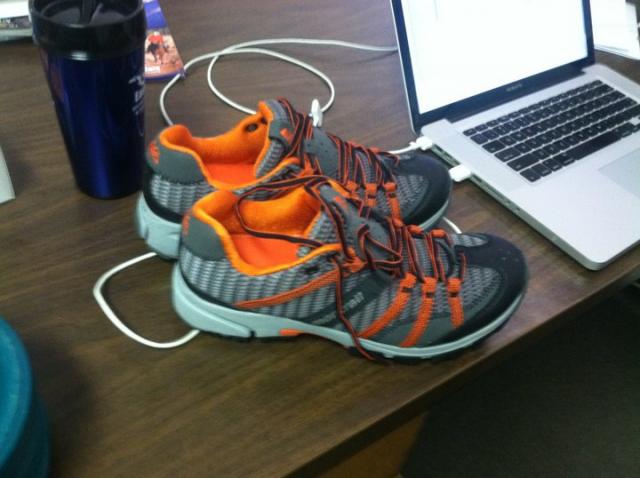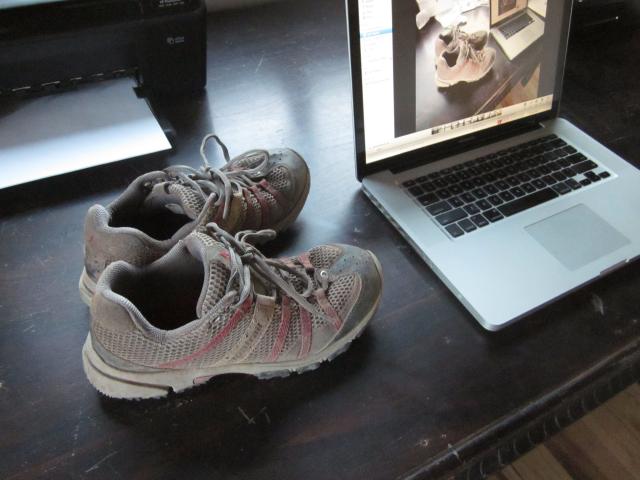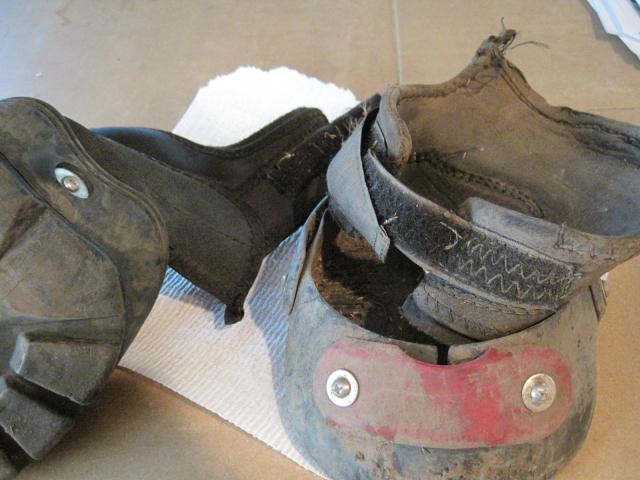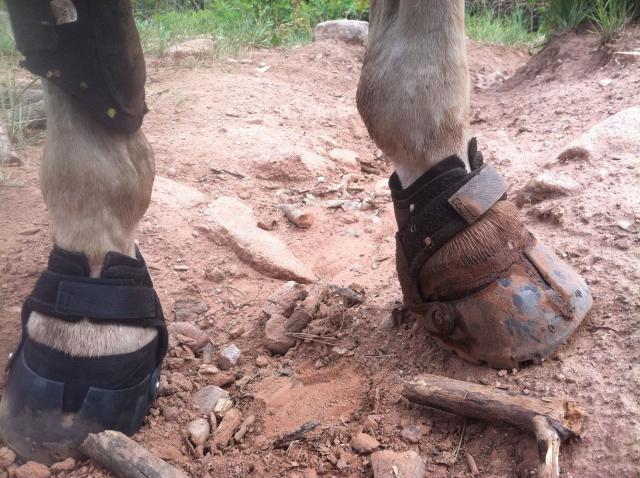This set of Old Mac’s are owned by a very dedicated customer in Colorado. We got her into a new set of Easyboot Trails after she started having boot failures.
#2: Is Your Equipment Up To Date?
I started running last year for the first time since I was in high school. Aside from the enjoyment of a runner’s high, the biggest surprise for me was how quickly the running shoes change in their ability to support and to grip the trail. Once they get about 250 miles on them, they go down to about 40% of their original performance. I’ve burned through nine pairs in the last twelve months.


New versus old.
I spend a fair amount of time seeing how many miles or months of use I can get out of an Easyboot Glove, including several months with a couple of boots with no screw in the back of the gaiter. Depending on the horse and the terrain, I usually expect to get about 500 miles per boot. And I know I’m not alone: we see many customers squeezing the last miles out of their horse hoof boots.
Nothing wears a boot out faster than a series of boot losses. If the gaiter stays on through a boot loss, the gaiter will suffer and the boot itself can get stretched or damaged when the horse steps on it.
The boot shell will usually outlast the gaiter – and if the boot is continuing to work well for you, remember you can always change out the gaiter for a new one and extend the life of the boot without having to incur full replacement costs.

Ripped gaiters (usually the result of long toe or high heels and the resulting boot loss). They can be replaced, but the source of the problem and the age of the boot also need to be assessed.
The chances of boot failure increases with the age of the boot or the number of miles it has been used. It’s just fact. And you should plan your riding activities around that piece of knowledge. If you’re out on a quiet trail ride or an easy training ride where you know the conditions are not going to challenge the boots, it’s fine to use old stuff.
If you’re going on a more challenging ride or event that you know will include mud or rocks or mountains or water crossings, you should probably pull out a newer set of boots.
I’m to the point now where I know when to anticipate the end of the road for a boot. You can see in the photo below how the boots change with miles. The boot on the left hind has about 420 miles on it. The boot on the right was new for the ride.

Ignore the difference in cleanliness of these boots and the uneven terrain: focus instead on the difference in the way the ‘v’ spreads at the fron of each boot. His feet are practically identical in size and shape, and these boots are both Size #0.
So if you’re heading for the hills of for an event, you may want to stick with newer equipment. Try taking a photo of the boot on the hoof when it is new and watch over time to see if the boot is beginning to wear down. Look for a loosening of the boot or fraying of the gaiters as signs of wear. Remember, you can extend the life of your boots by using accessories like power straps or atheletic tape.
Next week: #1: Choosing the Right Boot – how to choose the right boot for the right job for the shape of your horse’s hooves.
Kevin Myers

Director of Marketing
I am responsible for the marketing and branding of the EasyCare product line. I believe there is a great deal to be gained from the strategy of using booted protection for horses, no matter what the job you have for your equine partner.





